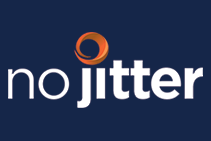Sonus has shifted to more of an “on-demand” buying model, in which the customer can start with a small deployment and then increase session and port capacity with just a license key.
This morning Sonus unveiled a number of enhancements to its line of session border controllers (SBCs). Unlike most product announcements we see in tech, there were no shiny new products or even new features spearheading the announcement. Instead Sonus focused on making it easier for customers to purchase, deploy and maintain its current products.
The company released version 3.2 of the 1000 and 2000 series SBCs. This version of code helps customers bring in an SBC at a lower cost and then offers a level of investment protection, particularly in Lync environments, a fast growing part of the company's business.
Feedback from channel partners has been that customers often don't know what kind of capacity they may require in an SBC and often under-buy, creating a scale problem down the road. Often the ramp of Lync voice is faster than anticipated or Lync video gets adopted, pushing up the session counts and bandwidth needs of the SBC. If the customer bought the wrong product, this puts the channel partner in an awkward situation, as either new hardware or a site visit might be required - or both. Either way it's a lose-lose for the customer and reseller.
Sonus has shifted to more of an "on-demand" buying model, in which the customer can start with a small deployment and then increase session and port capacity with just a license key. In fact, with this model, customers could actually start small, try the product in a lab, and then migrate the same product into production without having to deploy anything new. Often the "lab-to-production" migration of anything requires some kind of new boxes and maybe some new services.
The other benefit to the customer is that an upgrade carries with it no service disruption. It's certainly fair to say that the maintenance windows that IT works with today are far shorter, if not non-existent, compared to five years ago. Everything needs to be up all the time, as we live in a 24x7 world, so taking an SBC down and disrupting enterprise communications can be a risky proposition. The "license key" upgrade obviates this risk.
For the reseller there are a number of benefits as well. First, if a customer needs an upgrade, the order could be expedited and fulfilled immediately. No concern about whether the box is in stock, how long it might take to get, etc. Also, because the SBCs can be administered remotely, the reseller does not need to truck-roll field personnel during off hours, which is an expensive proposition. Sometimes these costs can be passed back to the customer, but in a managed service scenario, it's a cost the reseller has to eat.
Lastly, this should create better customer loyalty. Everyone likes fast service and this new purchasing model enables resellers to respond almost immediately to upgrade requests.
In a pre-briefing I had with Sonus, VP and GM David Tipping and I discussed how maintaining feature superiority at all points in time is impossible, and resellers have plenty of choices today. Sonus wants to be THE partner of choice for Lync environments, and to do that they've made the initial cost of acquisition low and the path to upgrade much simpler than in the past. The company will likely sacrifice some margin initially to do this, but this should be thought of more as an investment to establish the installed base and then recoup the revenue as customer environments scale.
The second part of the Sonus announcement was the release of version 4.1 of its service provider SBCs, the 7000, 5000 and software edition (SWe). Version 4.1 finally brings a common code base and operating system to its entire line of service provider-focused products. This is important, as it eliminates the need for customers to maintain different release versions in a mixed environment. The 5000 and SWe were already on the same code base, and some service providers may have hesitated to deploy the 7000 because of the complexity of running mixed code bases. Rapid integration of the SBC 7000 into existing networks is a key initiative for Sonus, as this is the highly scaled SBC that offers 10 Gig-E interfaces and, from what I understand, is also 40 Gig-E ready, offering investment protection.
While there were no new boxes or features as part of this announcement, I do think it's a significant announcement for Sonus. As has been well covered on this site and others, Lync voice and video deployments are starting to roll. I had called 2013 the year of Lync in a previous blog, and making its products easy to buy and easy to manage should help Sonus take advantage of this upcoming Lync wave.
Follow Zeus Kerravala on Twitter and Google+!
 @zkerravala
@zkerravala
 Zeus Kerravala on Google+
Zeus Kerravala on Google+







